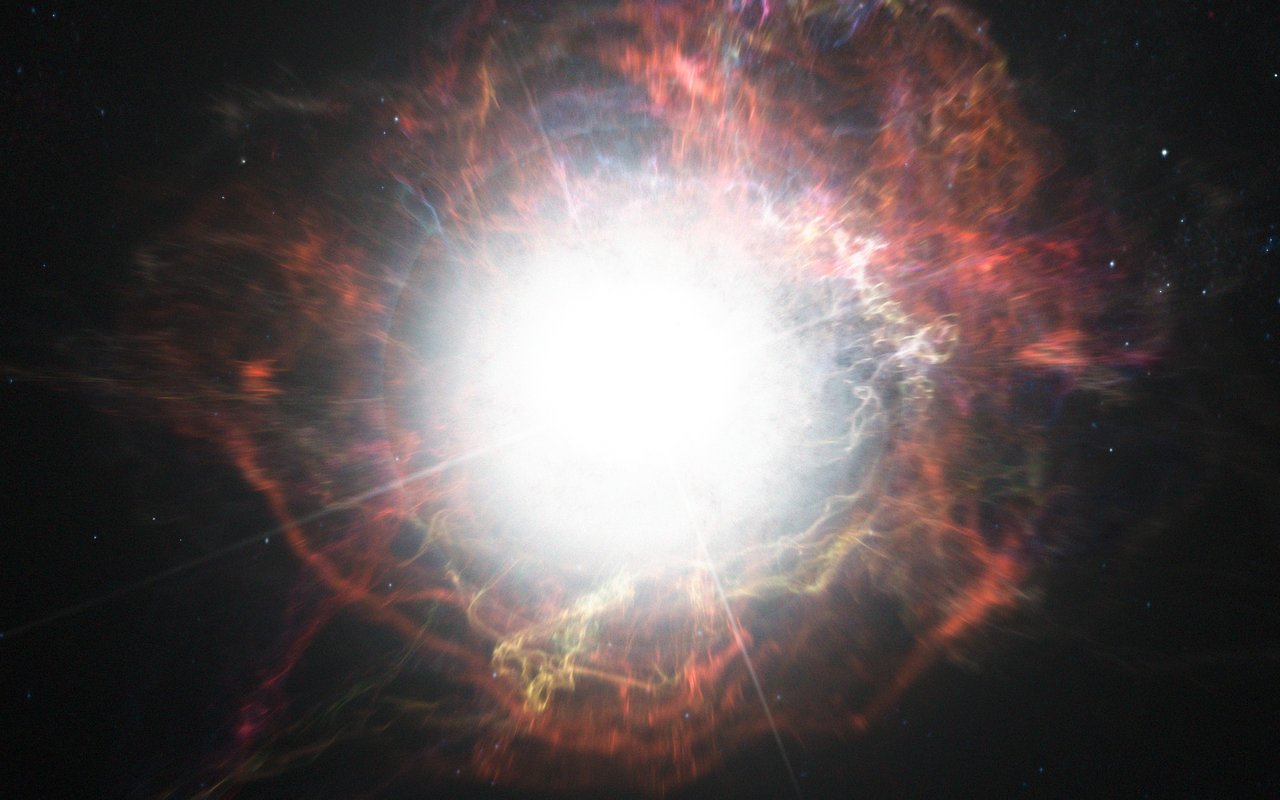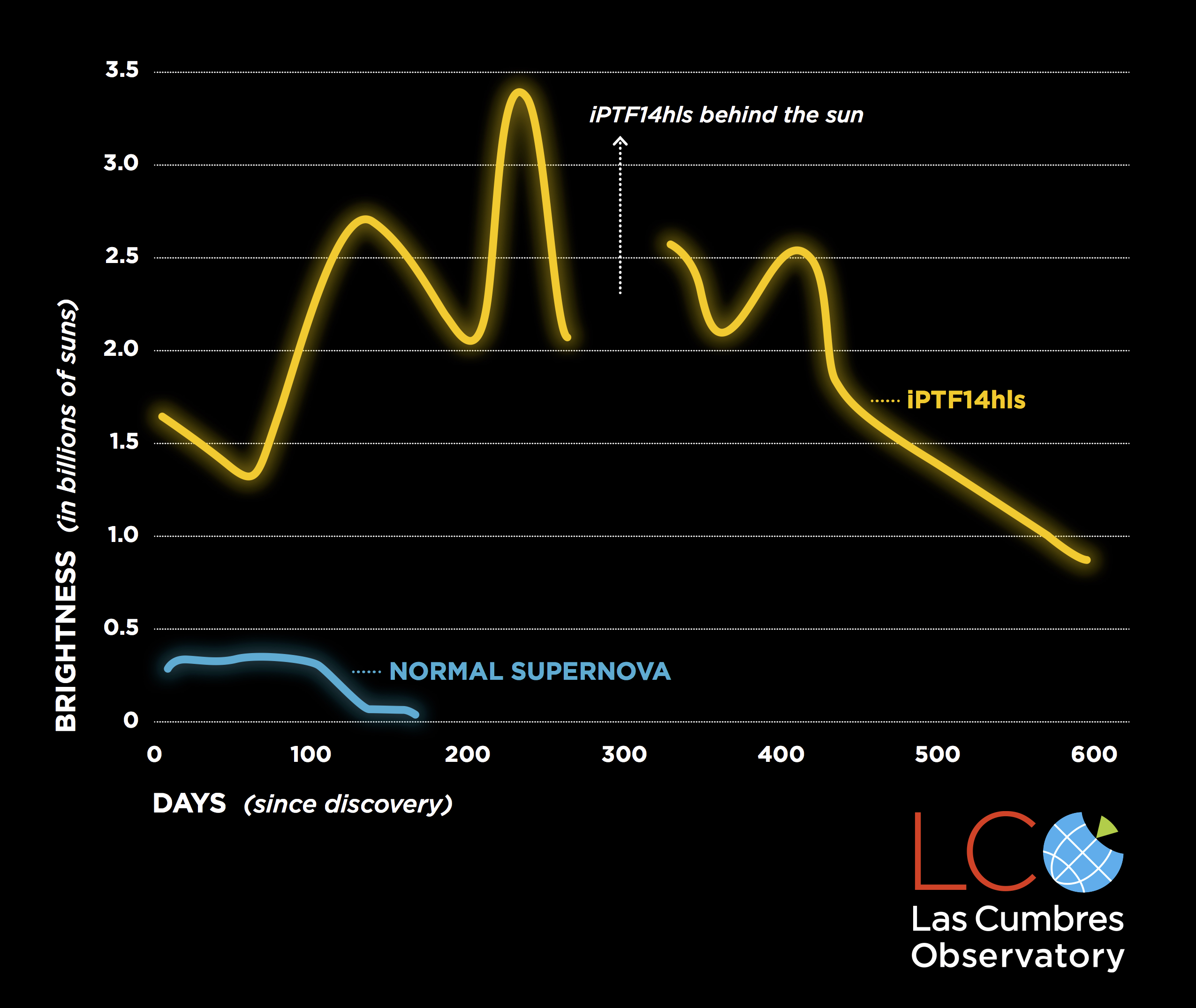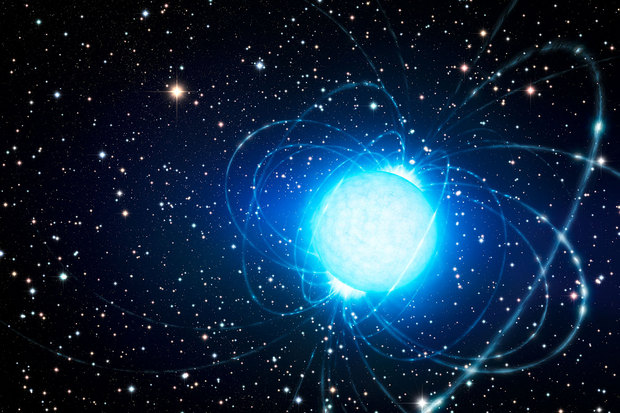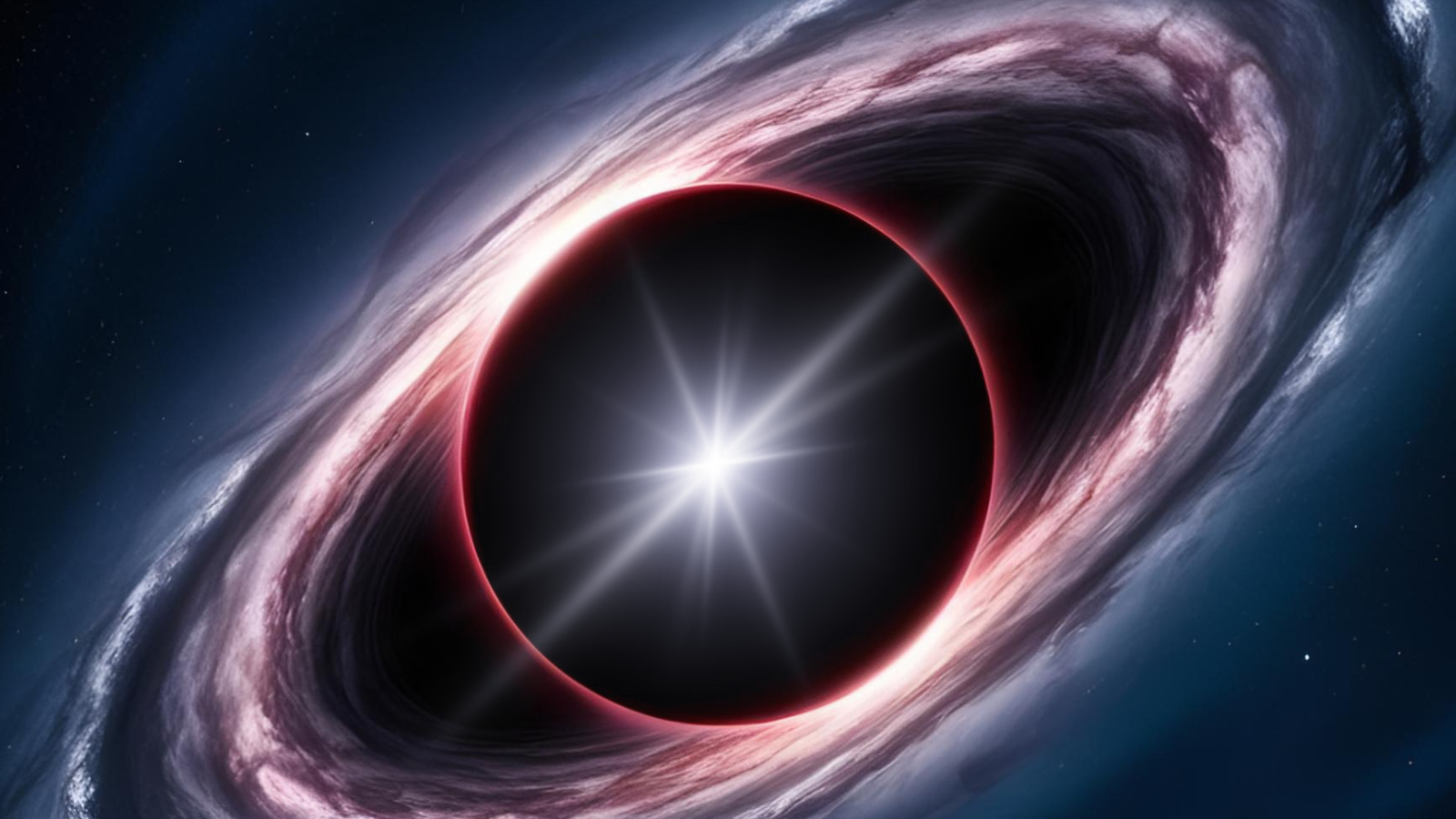Bizarre 3-Year-Long Supernova Defies Our Understanding of How Stars Die

The appearance of a years-long supernova explosion challenges scientist's current understanding of star formation and death, and work is underway to explain the bizarre phenomenon.
Stars more than eight times the mass of the sun end their lives in fantastic explosions called supernovas. These are among the most energetic phenomena in the universe. The brightness of a single dying star can briefly rival that of an entire galaxy. Supernovas that form from supermassive stars typically rise quickly to a peak brightness and then fade over the course of around 100 days as the shock wave loses energy.
In contrast, the newly analyzed supernova iPTF14hls grew dimmer and brighter over the span of more than two years, according to a statement by Las Cumbres Observatory in Goleta, California, which tracked the object. Details of the discovery appeared on Nov. 8 in the journal Nature. [First Supernova Shock Wave Image Snapped by Planet-Hunting Telescope]
An inconspicuous discovery
Supernova iPTF14hls was unremarkable when first detected by a partner telescope in San Diego on Sept. 22, 2014. The light spectrum was a textbook example of a Type II-P supernova, the most common type astronomers see, lead author Iair Arcavi, an astronomer at the University of California, Santa Barbara, told Space.com. And the supernova looked like it was already fading, he said.
The observatory was in the middle of a 7.5-year collaborative survey, so Arcavi focused on more-promising objects. But in February, 2015, Zheng Chuen Wong, a student working for Arcavi that winter, noticed the object had become brighter over the past five months.
"He showed me the data," Arcavi said, "and he [asked], 'Is this normal?' and I said, 'Absolutely not. That is very strange. Supernovae don't do that,'" Arcavi said.
At first, Arcavi thought it might be a local star in our galaxy, which would appear brighter because it was closer, he said. Many stars are also known to have variable brightness. But the light signature revealed that the object was indeed located in a small, irregular galaxy about 500 million light-years from Earth.
Get the Space.com Newsletter
Breaking space news, the latest updates on rocket launches, skywatching events and more!
And the object only got weirder. After 100 days, the supernova looked just 30 days old. Two years later, the supernova's spectrum still looked the way it would if the explosion were only 60 days old. The supernova recently emerged from behind Earth's sun, and Arcavi said it's still bright, after roughly three years. But at one one-hundredth of its peak brightness, the object appears to finally be fading out.
"Just to be clear, though, there is no existing model or theory that explains all of the observations we have," said Arcavi. The supernova may fade out; it may grow brighter, or it may suddenly disappear.
One reason for Arcavi's uncertainty is that a supernova was seen in the same location in 1954. This means that the event Acavi has been observing, whatever it is, may actually be 60 years running. There's a 1 to 5 percent chance the two events are unrelated, but that would be even more surprising, said Arcavi. Astronomers have never observed unrelated supernova in the same place decades apart. "We are beyond the cutting-edge of models," Arcavi said.

Beyond cutting edge
"I'm not sure, and I don't think anyone else is sure, just what the hell is happening," astrophysicist Stanford Woosley, at University of California, Santa Cruz, told Space.com. "And yet it happened, and so it begs explanation."
Woosley is not affiliated with the study, but he is among the theoreticians working to understand the event. Two hypotheses show promise in explaining it, he said.
The first involves the famous equation E = mc2. With this formula , Albert Einstein demonstrated that matter and energy are fundamentally interchangeable. Stars burn by converting matter into energy, fusing lighter elements like hydrogen and helium into heavier elements, which build up in the star's core and also release energy. When a star more than 80 times the mass of the sun reaches a temperature of 1 billion degrees Celsius (1.8 billion degrees Fahrenheit), this energy-matter equivalence produces pairs of electrons and their antiparticle counterparts, positrons, Woosley said. The process robs the star of energy, and so the object shrinks.
But as this happens, the temperature rises in the star's core. At 3 billion C (5.4 billion F), oxygen fuses explosively, blowing off massive amounts of material and resetting the cycle. This process repeats until the star reaches a stable mass, explained Woosley. When the front of an ejected shell of material hits the trailing edge of a previous shell, it releases energy as light.
The star continues to fuse oxygen and the elements of greater masses, up until iron, at which point the reaction fails to release enough energy to keep the star from collapsing in on itself.Eventually, a star like the one that gave rise to iPTF14hls will collapse into a black hole without another explosion, said Woosley.

This phenomenon, called a pulsation pair instability (PPI) supernova, could account for iPTF14hls' sustained luminosity as well as the object's varying brightness. This explanation would require the star to have been 105 times the mass of the sun, said Woosley. However, the PPI model cannot account for the tremendous amount of energy iPTF14hls has released. The first explosion of 2014 had more energy than the model predicts for all the explosions combined, said Arcavi.
What's more, this phenomenon has yet to be verified observationally. "Stars between 80 and 140 solar masses, which do this kind of thing, have to exist," said Woosley, "and they have to die, and so, somewhere, this has to be going on." But no one has seen it yet, he said.
A magnetic superstorm
An alternative explanation involves a star 20 to 30 times the mass of Earth's sun. After a more conventional supernova, such a star could have condensed into a rapidly spinning neutron star, called a magnetar.
A neutron star packs the mass of 1.5 suns into an object with a diameter about the size of New York City. A neutron star rotating at 1,000 times per second would have more energy than a supernova, according to Woosley. It would also generate a magnetic field 100 trillion to 1 quadrillion times the strength of Earth's field. As the star spun down over the course of several months, its incredible magnetic field could transfer the star's rotational energy into the remnants of the supernova that it formed from, releasing light, Woosley explained.

"It's like there's a lighthouse down in the middle of the supernova," said Woolsey.
But the magnetar explanation is not perfect, either. It has trouble explaining the dips and peaks in iPTF14hls' brightness, and the physics behind how such a phenomenon might work is still uncertain, said Woosley.
As iPTF14hls sheds energy, Arcavi said he hopes to be able to see deeper into the object's structure. If it is a magnetar, then he expects to see X-rays, previously obscured by the supernova itself, beginning to break through, he said. "Maybe by combining pulsation pair instability with [a magnetar], you can start to explain the supernova," Arcavi said.
Keeping busy while keeping watch
The existence of iPTF14hls has far-reaching implications, the researchers said. At 500 million light-years away, the supernova is still relatively close to Earth, and the universe is practically the same today — in terms of composition and organization —as it was when this event occurred, according to Arcavi. If the event was a PPI supernova, it tells astronomers that stars more than 100 times the mass of the sun — thought to be more prevalent in the early universe — are still forming today.
The event also had far more hydrogen than researchers expected to see. The explosion in 1954 should have expelled nearly all of the star's hydrogen, said Arcavi. Astrophysicists will have to revisit their models of supernovas to understand how this can occur, he said.
The finding has ramifications for the study of galaxies as well. "The energy of the gravity that's keeping that galaxy together is about the same order of magnitude as the energy that was released in the supernova," Arcavi said. "So, a few of these in a galaxy could actually unbind the entire galaxy."
Arcavi and his team plan to continue monitoring iPTF14hls for at least one to two years. And a suite of international telescopes and observatories will join the effort. Swedish colleagues at the Nordic Optical Telescope, in the Canary Islands, will track the object as it continues to dim beyond what Arcavi's telescope array can detect. NASA's Swift spacecraft will look for X-ray emissions, while the Hubble Space Telescope is scheduled to image the location beginning in December, and others will follow, Arcavi said.
For now, the event remains a mystery.
"It's just a puzzle in the sky," said Woosley. "That's what we live for, what astronomers love."
Email Harrison Tasoff at htasoff@space.com or follow him @harrisontasoff. Follow us @Spacedotcom, Facebook and Google+. Original article on Space.com.
Join our Space Forums to keep talking space on the latest missions, night sky and more! And if you have a news tip, correction or comment, let us know at: community@space.com.

Harrison Tasoff is a science journalist originally from Los Angeles. He graduated from NYU’s Science, Health, and Environmental Reporting Program after earning his B.A. in mathematics at Swarthmore College. Harrison covers an array of subjects, but often finds himself drawn to physics, ecology, and earth science stories. In his spare time, he enjoys tidepooling, mineral collecting, and tending native plants.
